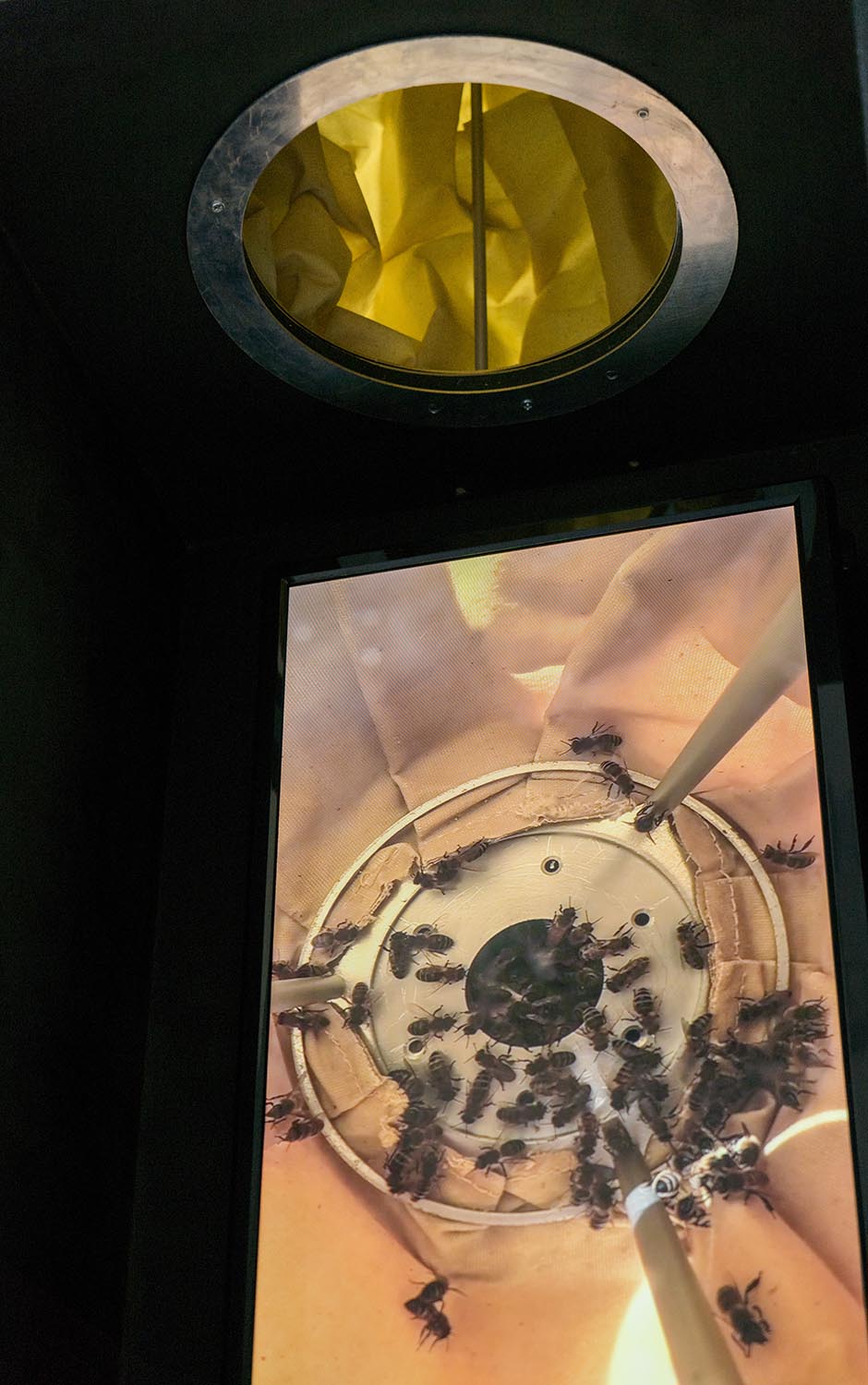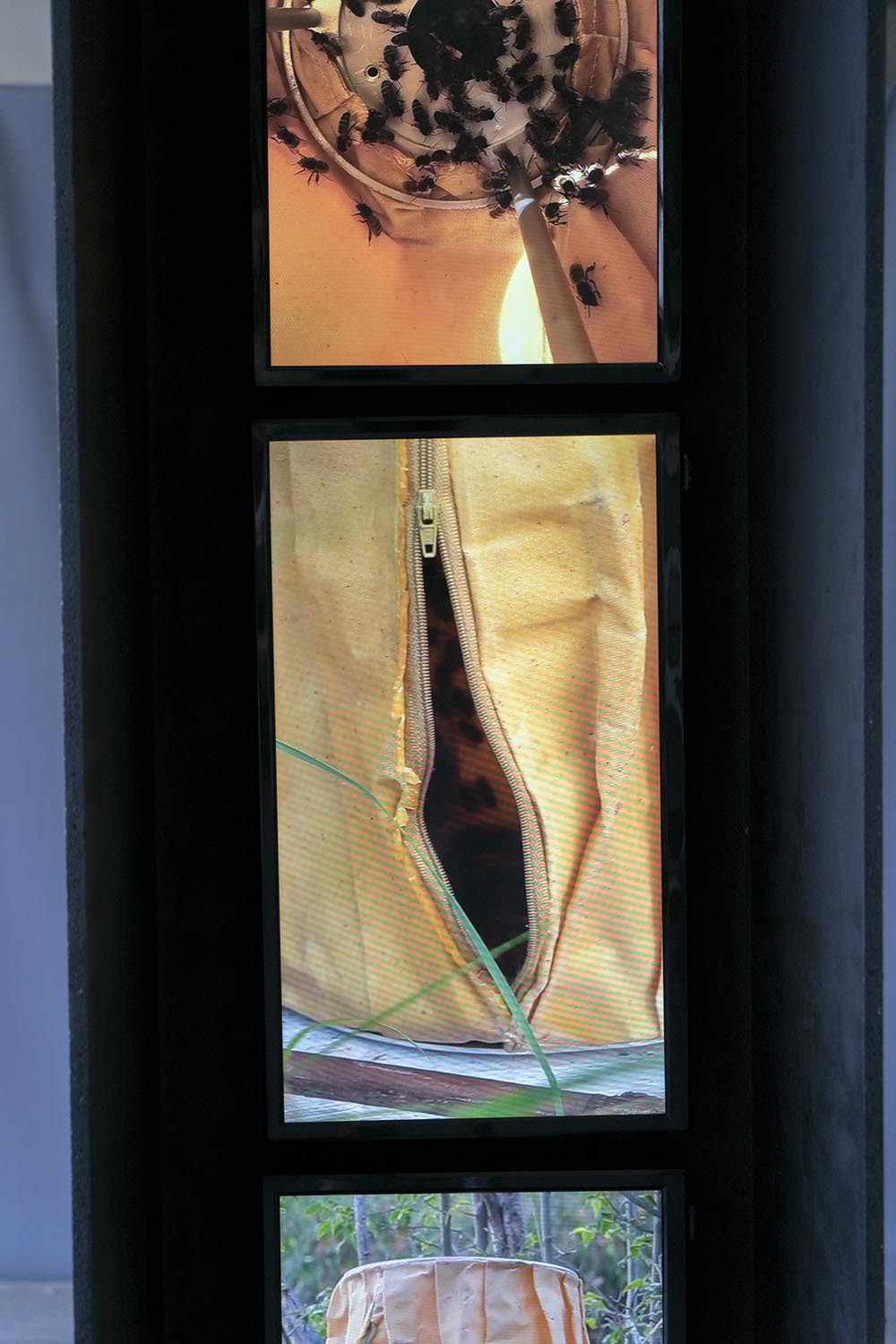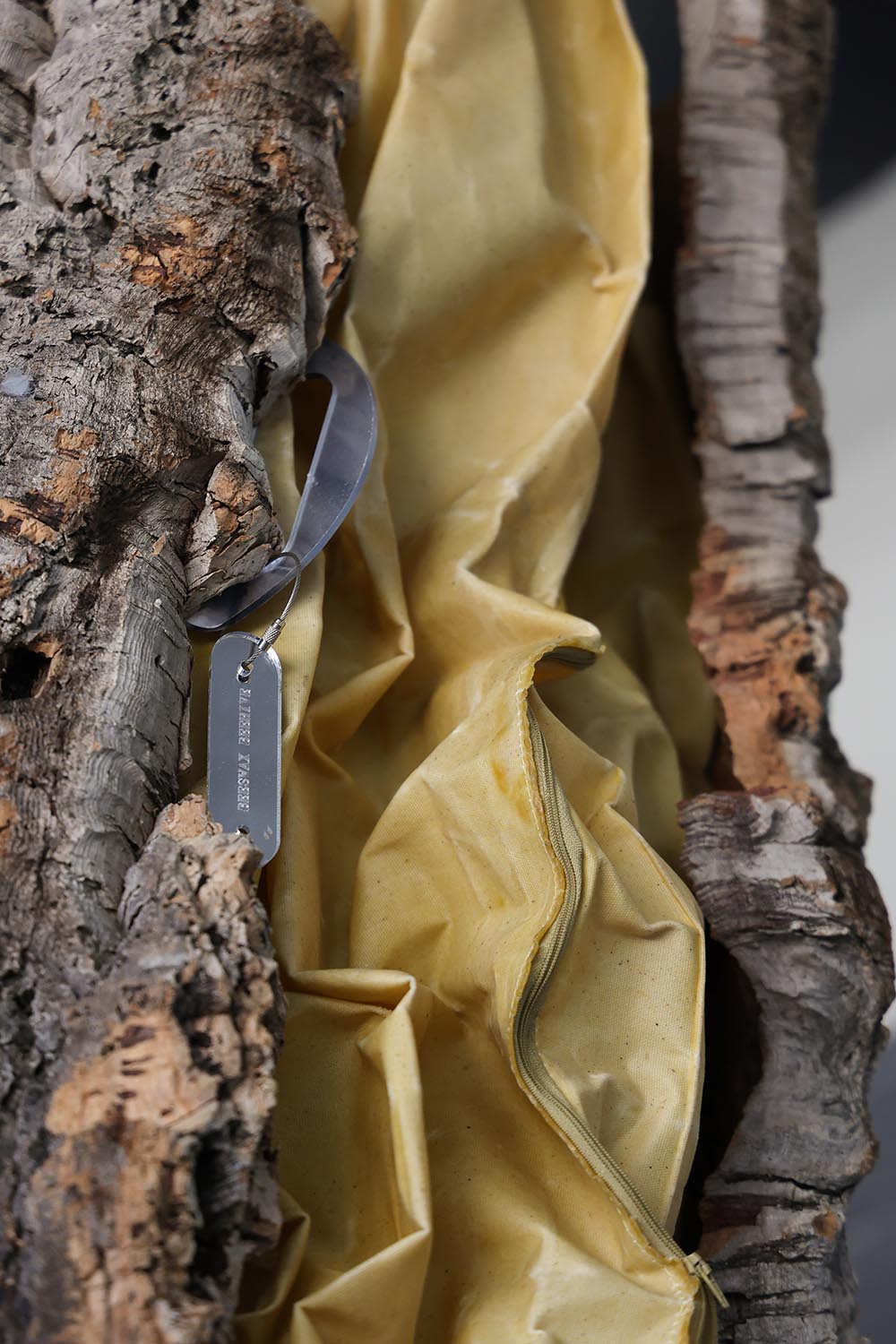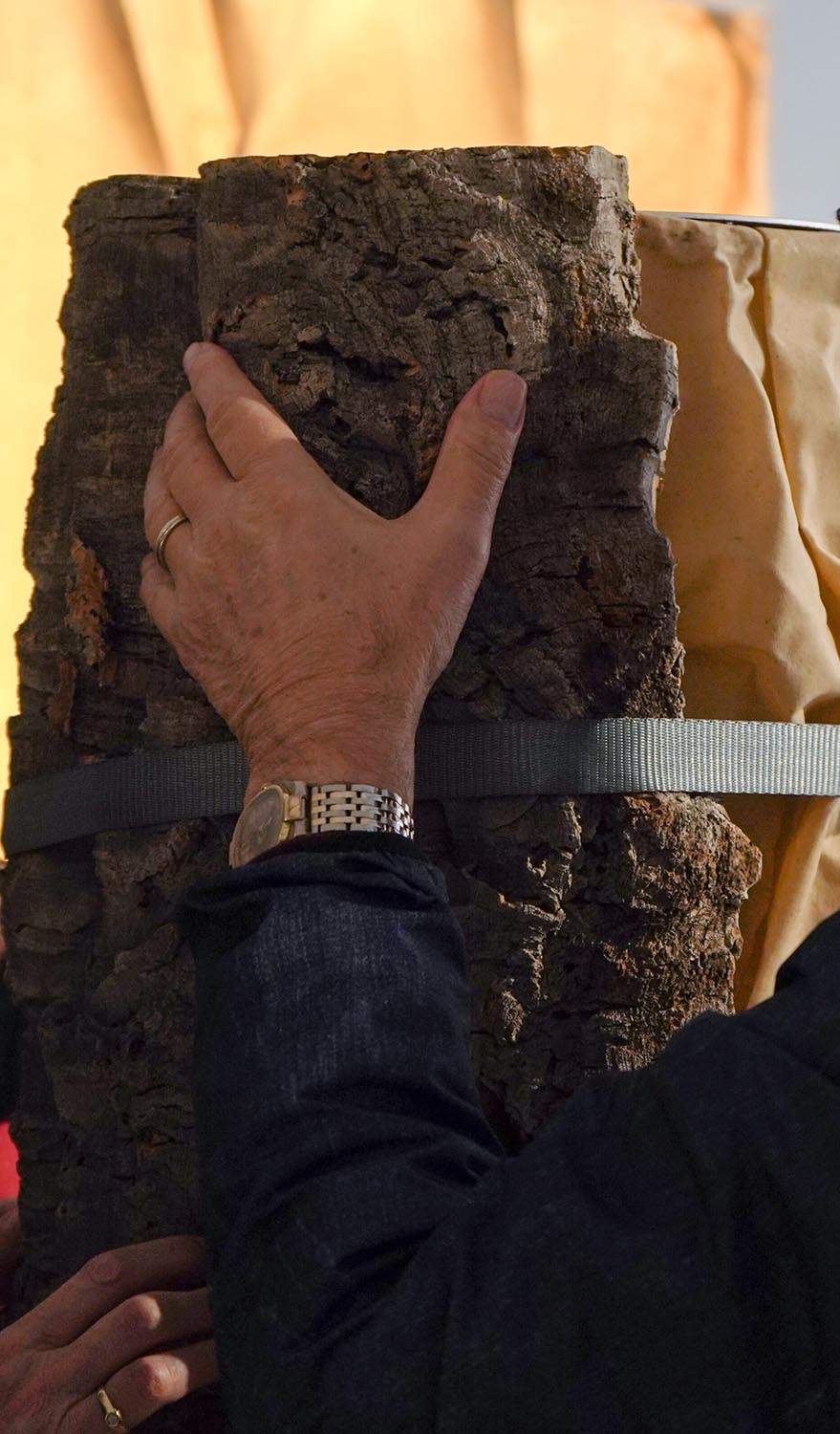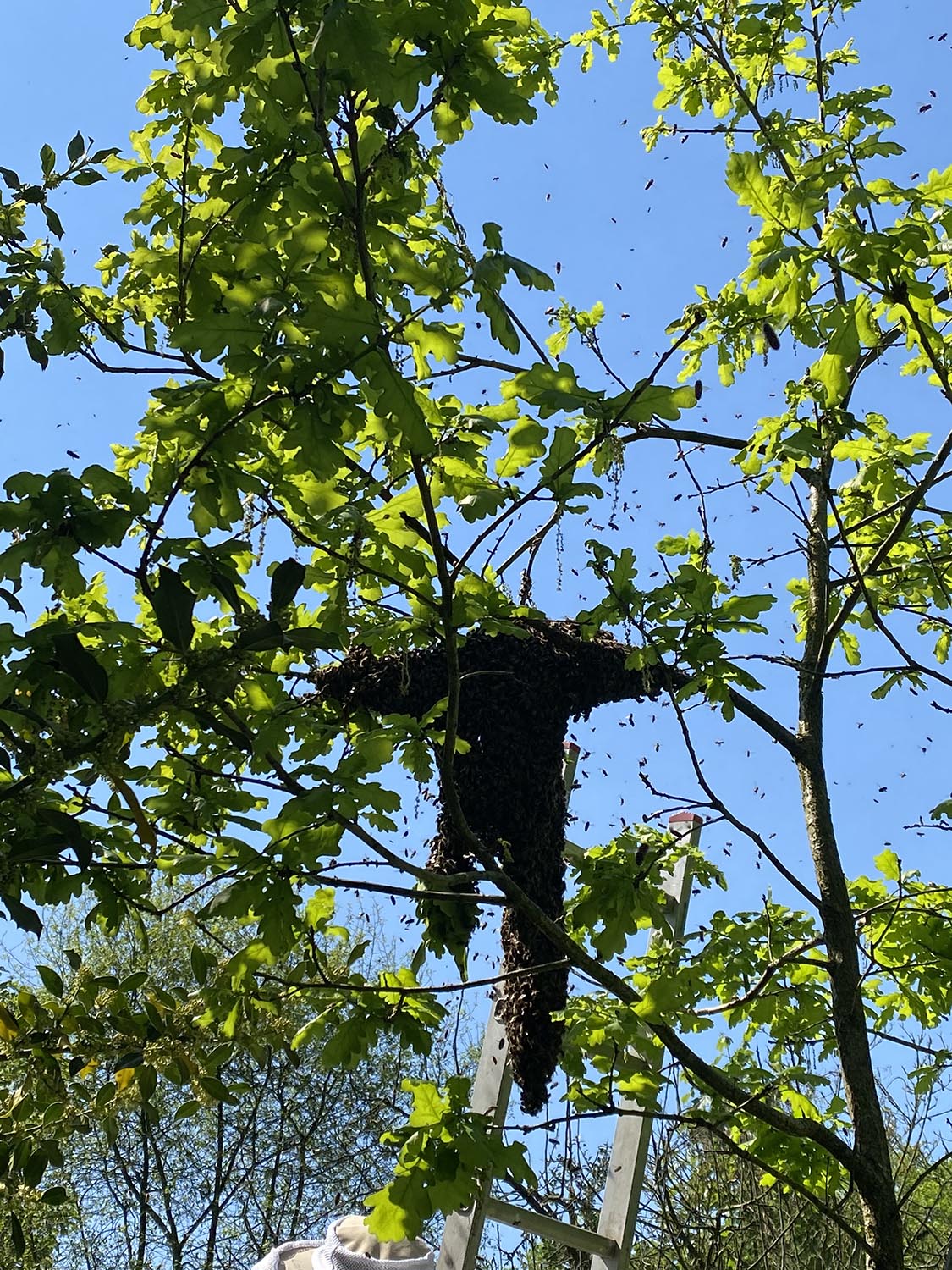Swarming is the collective reproduction of bee colonies. In spring, a moving cluster of bees led by their queen leaves their hive to establish a new one. While typically discouraged in beekeeping due to the issues it causes, swarming multiplies the survival chances of colonies, leaving behind infested comb with parasites like Varroa destructor.
To address this paradox, the Swarm Shepherd presents a pastoral approach to beekeeping centered on swarm guidance. Together with experienced beekeepers and entomologists, we co-designed a swarm trap infused with beeswax and queen pheromones to attract scouting bees during swarming season. Once a colony nests inside, a layer of cork bark provides insulation and ensures heat and scent retention for the honeycomb during the winter months. As a result, the Swarm Shepherd proposes a new path for research on bee health in existing apiaries, aiming to expand bee cultures beyond honey production.
An installation was produced to disseminate the project and the different experiments. On the top, the device is placed at the right height to attract a swarm. Underneath, three screens showcase the process of a swarm nesting inside, from the first worker bees scouting around the device until the swarm starts the preparation works to build the honeycomb.
For the experiments, we collaborated with the Bijentuin St. Ambrosius, a 100-year-old bee garden located in Eindhoven, The Netherlands. In there, the developments were carried out with amateur beekeepers. The experiments continued in Sierra Espadán, Spain, where the project was tested for the first time with professional beekeepers.
Type: Research
Project: Swarm shepherd





